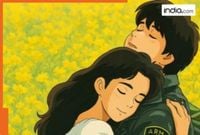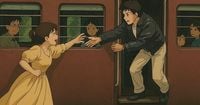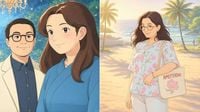The internet is abuzz with Studio Ghibli-style AI-generated portraits, thanks to OpenAI’s latest image-generation update for ChatGPT. Since the rollout of this feature, users have been captivated by the ability to create dreamy anime-style images reminiscent of Ghibli's iconic animation. However, there’s a catch: to access this feature, you’ll need a paid ChatGPT subscription.
Initially, OpenAI announced that its new image generation tool would be available to all tiers of ChatGPT, including free users. However, as of March 29, 2025, the company clarified that the rollout for free users has been delayed. When the feature does become available, free users will only be able to generate three images per day, significantly limiting their ability to explore this new creative avenue. Currently, only subscribers of the Plus, Pro, or Team plans can enjoy the full benefits of this Ghibli-inspired feature, which costs $20 a month.
For those unwilling to pay for a subscription, there are alternatives. Elon Musk’s Grok AI, built on Grok 3, is one such option that allows users to generate Ghibli-style images for free. While Grok can produce these images, the quality often varies, lacking the nuanced charm that ChatGPT’s model achieves. Additionally, Google’s latest Gemini model supports AI-generated images but does not allow users to transform real photos into Ghibli-style artworks, making it a less viable option for those hoping to see themselves as characters from a Miyazaki film.
Mobile applications like Remini and ToonMe also claim to convert real-life photos into cartoon versions, including anime-inspired styles. However, many of these apps hide their best features behind paywalls, which can be frustrating for users seeking to create Ghibli-style portraits without a subscription.
The viral Ghibli AI image trend has captured the attention of many online, especially fans of Studio Ghibli and members of Gen Z. Social media platforms have seen a surge of creativity, with users reimagining everything from personal portraits to iconic movie scenes in Ghibli style. On March 26, 2025, Twitter user Vivek Choudhary even shared Bollywood movie scenes transformed into Ghibli-style images, showcasing the trend's reach and popularity.
However, the rise of AI-generated images in the style of Studio Ghibli has not been without controversy. Hayao Miyazaki, the co-founder of Studio Ghibli and a celebrated animator, has expressed his disdain for AI-generated images. In a statement to FarOut Magazine, he said, "I can’t watch this stuff and find interesting. Whoever creates this stuff has no idea what pain is whatsoever. I am utterly disgusted. If you really want to make creepy stuff, you can go ahead and do it. I would never wish to incorporate this technology into my work at all." He further emphasized, "I strongly feel that this is an insult to life itself."
This backlash from the original creators highlights a significant concern within the artistic community regarding the use of AI in creative processes. Many fans and critics alike have pointed out that the essence of Ghibli’s storytelling and artistry cannot be replicated by algorithms. The hand-drawn magic that defines Ghibli films is rooted in human experience and emotion, something that AI simply cannot replicate.
As the internet continues to embrace this trend, the debate surrounding the ethics of AI-generated art is likely to intensify. Some argue that AI tools like ChatGPT and Grok democratize creativity, allowing more people to engage with art and storytelling. Others, however, worry that these technologies undermine the value of traditional artistry and the unique perspectives of human creators.
For now, if users want the most authentic Ghibli-style AI portraits, ChatGPT remains the best option—if they are willing to pay for it. The anticipation for the free tier continues to build, as many are eager to explore this new creative outlet without financial barriers. But until then, users will have to choose wisely among the various alternatives available.
As the trend evolves, it will be interesting to see how it shapes the future of digital art and the ongoing conversation about the role of technology in creative expression. Will AI-generated images become a staple of modern art, or will they remain a controversial topic among artists and fans alike? Only time will tell.






